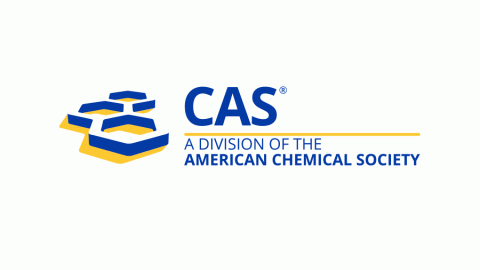The effects of salicylic acid on the germination and early seedling growth of pigeon pea (Cajanus cajan)
DOI:
https://doi.org/10.15835/nsb12310777Keywords:
early seedlings; germination percentage; leaflet area; pigeon pea (Cajanus cajan); salicylic acidAbstract
This study investigated the effects of salicylic acid (SA) on the germination and early seedling growth of Pigeon pea (Cajanus cajan L., Fabaceae). Pigeon pea were sown in soils containing 5 mg/l, 10 mg/l, 20 mg/l, 30 mg/l and 50 mg/l SA and a control (0 mg/l). The treatment was applied to the plant for 6 weeks from the day of planting. It was observed that the leaflet area increased more in plants that received SA treatment in low concentration (0 mg/l, 5 mg/l, 10 mg/l and 20 mg/l) than in those with higher concentration (30 mg/l and 50 mg/l). The same result was obtained in the total chlorophyll content of the leaves and in average height of the plant (p<0.05). It was also observed that the number of leaves formed were more in plant that had little SA concentration. However, it was also discovered that at concentration below 10 mg/l, the growth promoting effect of SA declined. The study presents supporting evidence that optimum SA concentration required for maximum seed germination and early seedling growth in C. cajan is 20 mg/l. This finding will act as guide in the application of SA treatment in growing C. cajan.
Metrics
References
Al-Whaibi M, Siddiqui M, Basalah M (2012). Salicylic acid and calcium-induced protection of wheat against salinity. Protoplasma 249(3):769-778. https://doi.org/10.1007/s00709-011-0322-1
Ambasta S (2004). National Institute of Science Communication. The useful plants of India. 4th ed. New Delhi pp 94-95.
Anaya F, Fghire R, Wahbi S, Loutfi K (2015). Influence of salicylic acid on seed germination of Vicia faba L. under salt stress. Journal of the Saudi Society of Agricultural Sciences 17:1-8. https://doi.org/10.1016/j.jssas.2015.10.002
AOSA (2000). Association of official seed analysts. Rules for testing seeds. Proceedings of the Association of Official Seed Analysts 60(2):39.
Apogee Instruments Incorporated (2007). How it works? Retrieved 2007 June 26 from http://www.apogeeinstruments.com.
Arnon D (1949). Copper enzyme polyphenoloxide in isolated chloroplast in Beta vulgaris. Journal of Agriculture 2:1-9. https://doi.org/10.1104/pp.24.1.1
Azooz MM (2009). Salt stress mitigation by seed priming with salicylic acid in two faba bean genotypes differing in salt tolerance. International Journal of Agriculture and Biology 11:343 350.
Canakci C (2011). Effects of salicylic acid on growth, biochemical constituents in pepper (Capsicum annuum L.) seeddlings. Pakistan Journal of Biological Sciences 14(4):300-304. https://doi.org/10.3923/pjbs.2011.300.304
Chai J, Liu J, Zhou J, Xing D (2014). Mitogen-activated protein kinase 6 regulates NPR1 gene expression and activation during leaf senescence induced by salicylic acid. Journal of Experimental Botany 65:6513-6528. https://doi.org/10.1093/jxb/eru369
Chen J, Zhu C, Li L, Sun Z (2007). Effects of exogenous salicylic acid on growth and H2O2-metabolizing enzymes in rice seedlings under lead stress. Journal of Environmental Sciences 19:44-49. https://doi.org/10.1016/s1001-0742(07)60007-2
Coronado MA, Trejo-Lopez G, Karque-Saavedro A (1998). Effect of salicylic acid on the growth of roots and shoots in soybean. Plant Physiology and Biochemistry 36:563-565.
El-Tayeb MA (2005). Response of barley grains to the interactive effect of salinity and salicylic acid. Plant Growth Regulation 45:215-224. https://doi.org/10.1007/s10725-005-4928-1
Görgényi Miklósné Tari I, Csiszár J, Horváth E, Poór P, Takács Z, Szepesi Á (2015). The alleviation of the adverse effects of salt stress in the tomato plant by salicylic acid shows a time-and organ-specific antioxidant response. Acta Biologica Cracoviensia Series Botanica 57(1):21-30.
Grover O, Gaur I, Mitra J, Paul P (2015). Effect of salicylic acid on germination of Phaseolus vulgaris and Cicer arietinum under salt stress. Trends in Biosciences 8(16):4142 4147.
Gunes A, Inal A, Alpaslam M, Erslan F, Bagsi E, Cicek N (2007). Salicylic acid induced changes on some physiological parameters symptomatic for oxidative stress and mineral nutrition in maize (Zea mays) grown under salinity. Journal of Plant Physiology 164(6):728-736. https://doi.org/10.1016/j.jplph.2005.12.009
Gunes A, Inal A, Alpaslan M, Cicek N, Guneri E, Eraslan F, Guzelordu T (2005). Effects of exogenously applied salicylic acid on the induction of multiple stress tolerance and mineral nutrition in maize (Zea mays L.). Archives of Agronomy and Soil Science 51:687-695. https://doi.org/10.1080/03650340500336075
Horvath E, Szalai G, Janda T (2007). Induction of abiotic stress tolerance by salicylic acid Signaling. Journal of Plant Growth Regulator 26:290-300. https://doi.org/10.1007/s00344-007-9017-4
Huang RH, Liu JH, Lu YM, Xia RX (2008). Effect of salicylic acid on the antioxidant system in the pulp of ‘Cara cara’ navel orange (Citrus sinensis (L.) Osbeck) at different storage temperatures. Postharvest Biology and Technology 47:168-175.
ISTA (2005). International rules for seed testing. International Seed Testing Association (ISTA), Seed Science and Technology.
Jadhav SH, Bhamburdekar SB (2011). Effect of salicylic acid on germination performance in groundnut. International Journal of Applied Biology and Pharmaceutical Technology 2(4):224-227.
Jumali SS, Said IM, Zainal Z (2011). Genes induced by high concentration of salicylic acid in (Mutragyna speciosa). Australian Journal of Crop Science 5:296-303.
Kaur P, Ghai N, Sangha M (2009). Induction of thermotolerance through heat acclimation and salicylic acid in Brassica species. African Journal of Biotechnology 8:619-625. https://doi.org/10.5897/AJB2009.000-9104
Kaya MD, Okçu G, Atak M, Çikili Y, Kolsarici Ö (2006). Seed treatment to overcome salt and drought stress during germination in sunflower (Helianthus annuus L.). European Journal of Agronomy 24:291-295.
Kaydan D, Yagmur M, Okut N (2007). Effects of salicylic acid on the growth and some physiological characters in salt stressed wheat (Triticum aestivum L.). Torim Bilimieri Dergisi 13(2):114-119.
Kazemi-Shahandashti S, Maali-Amiri R, Zeiali H, Khazaei M, Talei A, Ramezanpour S (2014). Effect of short-term cold stress on oxidative damage and transcript accumulation of defense-related genes in chickpea seedlings. Journal of Plant Physiology 171:1106-1116. https://doi.org/10.1016/j.jplph.2014.03.020
Khodary SEA (2004). Effect of salicylic acid on the growth, photosynthesis and carbohydrate metabolism in salt stressed maize plants. International Journal of Agriculture and Biology 6(1):5-8. https://doi.org/10.1.1.322.9285
Krantev A, Yordanova R, Janda T, Szalai G, Popova L (2008). Treatment with salicylic acid decreases the effect of cadmium on photosynthesis in maize plants. Journal of Plant Physiology 165:920-931. https://doi.org/10.1016/j.jplph.2006.11.014
Mir-Mahmoodi T, Golizadeh SK, Khaliliqhdam N, Yazdanseta S (2014). The effect of salicylic acid on rate germination and seedling establishment on rapeseed (Brassica napus L.). International Journal of Agriculture Innovations and Research 2(6):2319-1473.
Miura K, Tada Y (2014). Regulation of water, salinity and cold stress responses by salicylic acid. Frontiers in Plant Science 5:4. https://doi.org/10.3389/fpls.2014.00004
Moharekarst I, Moherekar SD, Hara T, Taraka R, Tanak A, Chavan PD (2003). Effect of salicylic acid on chlorophyll and carotenoid contents of wheat and moong seedlings. Photosynthetica 41:315-317. https://doi.org/10.1023/B%3APHOT.0000011970.62172.15
Musa SI, Ikhajiagbe B (2019). Bioaccumulation of heavy metals by Vigna unguiculata (Cowpea) grown on Olusosun dumpsite, Lagos Nigeria. Journal of Underutilized Legumes 1(1):91-98.
Najafian S, Khoshkhui M, Vahid T (2009). Effect of salicylic acid and salinity in rosemary (Rosmarinus officinalis L.): Investigation on changes in gas exchange, water relations, and membrane stabilization. Advances in Environmental Biology 3(3):322-328.
Natarajan M, Willey R (1980). Sorghum-pigeon pea inter cropping and the effect of plant population density on growth and yield. Journal of Agricultural Science 92:513-526.
Patil DB, Shewale AB, Bhamburdekar S (2016). Influence of salicylic acid on seed germination of pigeon pea (Cajanus cajan (L.). International Research Journal of Engineering and Technology 3(8):135-137.
Radford B (1992). Growth analysis formular-their use and abuse. Crop Science 7:171-175.
Radhakrishnan N, Balasubramanian R (2009). Salicylic acid induced defense responses in Curcuma longa (L.) against Pythium aphanidermatum infection. Crop Protection 28:974-979. https://doi.org/10.1016/j.cropro.2009.07.010
Rajjou L, Belghazi M, Huhust R, Robin C, Moreau A, Job C, Job D (2006). Proteomic investigation of the effect of salicylic acid on Arabidiopsis seed germination and establishment of early defense mechanism. Plant Physiology 141:910- 923. https://doi.org/10.1104/pp.106.082057
Shakirova F, Sakhabutdinova A, Bezrukova M, Fatkhutdinova R, Fatkhudinova DR (2003). Changes in the hormonal status of wheat seedlings induced by salicylic acid and salinity. Plant Science 164:317-322.
Sharma D, Green JM (1980). Pigeon pea. In: Fehr WR, Hadley H (Eds). Hybridization of crop plants.
Singh P, Chaturvedi V, Bose B (2010). Effects of salicylic acid on seedling growth and nitrogen metabolism in cucumber (Cucumis sativus L.). Journal of Stress Physiology & Biochemistry 6:103-113. https://doi.org/10.1080/11263504.2011.602991
Wang Y, Mopper S, Hasentein K (2011). Effect of salinity on endogenous ABA, IAA, JA, and SA in Iris hexagona. Journal of Chemical Ecology 27:327-342. https://doi.org/10.1023/a:1005632506230
Weissmann G (1991). Aspirin. Scientific American 264:84-90.
Yildirim E, Turan M, Guvenc I (2008). Effect of foliar salicylic acid applications on growth, chlophyll and mineral content of cucumber grown under salt stress. Journal of Plant Nutrition 31(3):593-612. https://doi.org/10.1080/01904160801895118
Zengin F (2014). Exogenous treatment with salicylic acid alleviating copper toxicity in bean seedlings. Proceedings of the National Academy of Sciences, India Section B: Biological Sciences 84:749-755. https://doi.org/10.1007/s40011-013-0285-4
Zeven AC, Zhukovsky PM (1975). Dictionary of cultivated plants. In: Huxby J (Ed). The New Systematics. Oxford University. London, UK pp 549-566.
Zhang Y, Xu S, Yang S, Chen Y (2015). Salicylic acid alleviates cadmium-induced inhibition of growth and photosynthesis through upregulating antioxidant defense system in two melon cultivars (Cucumis melo L.). Protoplasma 252:911-924. https://doi.org/10.1007/s00709-014-0732-y
Zhou LY, Chen JL, Chen DF, Sun JR, Liu Y, Tian Z (2009). Biochemical and molecular characterization of Sitobion avenae-induced wheat defense responses. Crop Protection 28:435-442. https://doi.org/10.1016/j.cropro.2009.01.005
Downloads
Published
How to Cite
Issue
Section
License
Papers published in Notulae Scientia Biologicae are Open-Access, distributed under the terms and conditions of the Creative Commons Attribution License.
© Articles by the authors; licensee SMTCT, Cluj-Napoca, Romania. The journal allows the author(s) to hold the copyright/to retain publishing rights without restriction.
License:
Open Access Journal - the journal offers free, immediate, and unrestricted access to peer-reviewed research and scholarly work, due SMTCT supports to increase the visibility, accessibility and reputation of the researchers, regardless of geography and their budgets. Users are allowed to read, download, copy, distribute, print, search, or link to the full texts of the articles, or use them for any other lawful purpose, without asking prior permission from the publisher or the author.













.png)















